The banjo, with its distinct twangy voice, is a musical instrument deeply rooted in American heritage, yet its origins trace back to Africa. Its journey from being a primary instrument in traditional African music to gaining popularity in American folk and eventually bluegrass music, is a rich history that echoes the cultural exchange and transformation throughout centuries. This fascinating tale of the banjo, a symbol of musical expression, offers a unique perspective into the interconnectedness of music, culture, and history.
Roots in West Africa
The banjo’s story begins in West Africa, where similar stringed instruments have been played for hundreds of years. These instruments, known as akonting or ekonting in different regions, typically featured a long neck, a body made from a hollowed-out gourd, and three to four strings. The design and sound of these instruments, played to accompany storytelling and communal activities, would eventually evolve into what we recognize today as the banjo. African slaves brought their musical traditions, including these early precursors of the banjo, to the Americas, marking the beginning of the instrument’s journey towards its place in the music world.[1]
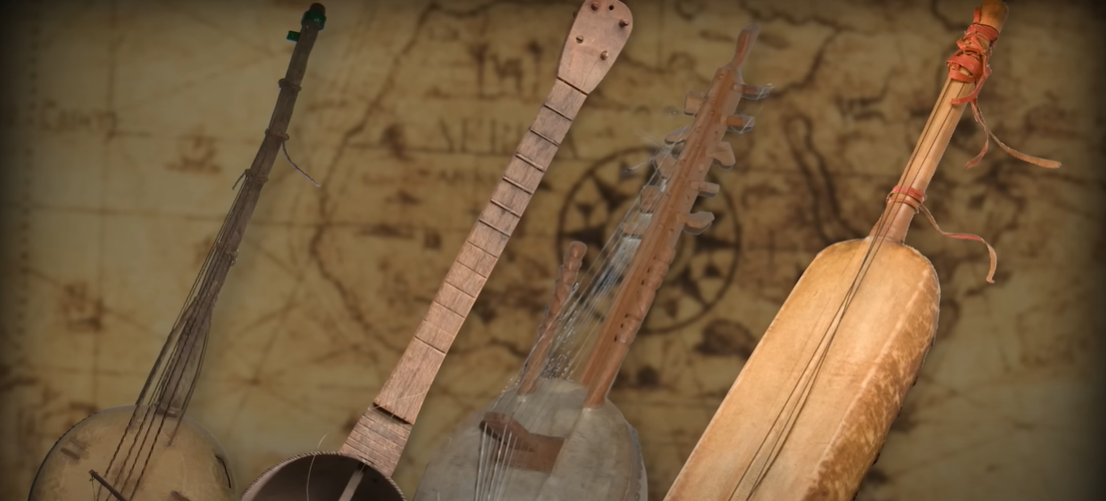
Early Gourd Banjo in the Americas
The early versions of the banjo, introduced to the Americas by African slaves, were primarily made from gourds. These gourd banjos, akin to their West African counterparts, possessed a neck mounted onto a hollowed gourd with three to four strings attached. They served a pivotal role in slave communities, providing a source of solace and an expression of their cultural heritage amid the harrowing conditions of their new life. Over time, these instruments began to draw attention outside these communities, piquing the interest of white musicians who played a key role in popularizing the instrument beyond its origins. This marked the next critical step in the evolution of the banjo, setting the stage for its transition from a traditional African instrument to an iconic symbol of American folk music.[1]
The Banjo and Blackface Minstrelsy
In the mid-nineteenth century, the banjo began to gain widespread popularity within the United States through an unfortunate and controversial medium: blackface minstrelsy. Minstrel shows were performances wherein white musicians would paint their faces black and imitate African American culture, often in an exaggerated and derogatory manner. These shows, deeply rooted in racism and stereotypes, were paradoxically instrumental in escalating the banjo’s popularity among white audiences. The banjo, central to these performances, was seen as an exotic novelty and a symbol of the ‘plantation culture’. Over time, the minstrel banjo, with its now familiar fretted neck and typically five strings, began to diverge from its African roots, laying the foundation for the modern banjo. This period, while highlighting the instrument’s growing popularity, also underscores the cultural appropriation and racial discrimination inherent in American history.[1]
The Elevation of the Banjo
As the 20th century dawned, the banjo started to shake off its associations with minstrelsy and began its ascent to becoming a respected instrument in mainstream music. It found its place in classic ragtime and early jazz styles, and musicians started to innovate, exploring new techniques and tunings. In the 1940s, the banjo gained prominence in the bluegrass genre, thanks to musicians like Earl Scruggs, who introduced a fast, three-finger picking style that would become synonymous with bluegrass music. This dramatic shift in the banjo’s image was a testament to its resilience and diversity. Its bright, ringing tones and versatility allowed it to adapt seamlessly to various musical genres, which enabled it to survive and thrive through the changing tides of musical trends. It was during this period that the banjo, once marginalized and stigmatized, finally received its long overdue recognition as a significant and influential force within the musical landscape.[2]
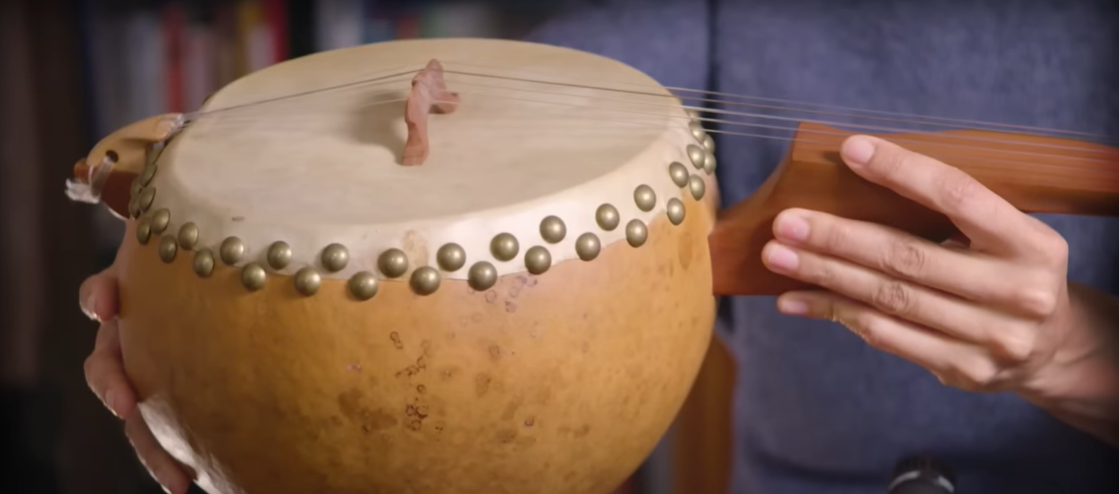
Ragtime and Jazz Banjo
Ragtime and jazz, two genres that emerged in the late 19th and early 20th centuries, carved out new spaces for the banjo in the musical world. With its robust, rhythmic sound, the banjo was perfectly suited for the syncopated, ‘ragged’ rhythms of ragtime music. Musicians such as Fred Van Eps and Vess Ossman played a pivotal role in introducing the banjo to these new musical landscapes, showcasing its versatility and its potential for expressive performance.
When jazz music began its ascent, the banjo seamlessly transitioned into this fresh genre. Jazz bands of the early 20th century often incorporated the banjo, utilizing its vibrant, percussive sound to drive rhythm sections. The fast-paced and improvisational nature of jazz also allowed banjo players to explore and expand upon new playing techniques, pushing the boundaries of what was possible with the instrument. However, as jazz evolved and big band styles became mainstream, the banjo was gradually replaced by the guitar. Despite this, its influence during the formative years of jazz is undeniable and marked an important chapter in the banjo’s history.[2]
Rural Banjo
The rural or old-time banjo, deeply rooted in American folk tradition, marked yet another remarkable phase in the banjo’s evolution. Originating in the rural regions of the American South, the banjo found a new voice, largely through oral tradition. The rural banjo playing style embraced the simplicity and spirit of traditional folk music, characterized by the distinctive clawhammer strumming technique and down-picking style. This technique lent a mesmerizing rhythmic pattern to the music, captivating listeners with its raw and authentic sound.
The enduring legacy of the rural banjo serves as a testament to its profound impact on American music. It remains a captivating symbol of heritage and tradition, weaving together the threads of history and the rich tapestry of rural life.[2]

Old-Time Banjo Recordings
The early-to-mid 20th century witnessed a significant milestone in the history of music with the emergence of old-time banjo recordings. These recordings not only captured the essence of a rustic and emotive musical style but also played a crucial role in preserving it for future generations. Pioneering recording companies, driven by a desire to capture the essence of ‘authentic’ American music, embarked on journeys to the rural heartlands. It was in these remote corners of the country that they discovered and recorded local musicians, who became the torchbearers of this unique genre.
Among these influential musicians was Dock Boggs, whose music resonated with listeners and left an indelible mark on the recording industry. In the late 1920s, Boggs shared his mastery of the banjo through captivating compositions like ‘Country Blues’ and ‘Sugar Baby.’ These recordings, characterized by their raw and haunting sound, became iconic examples of old-time banjo music. They not only showcased Boggs’ exceptional talent but also reflected the spirit and soul of an era.
Similarly, Roscoe Holcomb’s contributions to old-time banjo music were of immense significance. His high, lonesome singing and frenetic banjo playing were meticulously captured on numerous recordings. Through his unique style and heartfelt performances, Holcomb provided a poignant insight into the rich tapestry of this musical tradition. His recordings continue to serve as a valuable resource, offering inspiration and guidance to future generations of musicians and music enthusiasts.
Despite the passage of time and the emergence of new musical genres, the allure of these old-time banjo recordings remains undiminished. They embody the timeless appeal of the banjo as an instrument that has the power to captivate and evoke emotions. These recordings not only document a bygone era but also serve as an enduring testament to the enduring legacy of old-time banjo music.
In conclusion, the advent of old-time banjo recordings in the early-to-mid 20th century marked a significant moment in the history of music. Through the efforts of pioneering recording companies and the talents of musicians like Dock Boggs and Roscoe Holcomb, this rustic and emotive musical style was immortalized for posterity. These recordings continue to resonate, offering a window into the past and inspiring present and future generations with the timeless beauty of old-time banjo music.[2]
Bluegrass Banjo
The bluegrass banjo, with its distinctive bright and resonant sound, and its rapid three-finger picking style, marked a significant shift in the evolution of the banjo, ushering it into a new era of musical expression. This innovative playing style, pioneered by the legendary Earl Scruggs during the mid-20th century, quickly became a defining characteristic of bluegrass music. As an integral part of the bluegrass ensemble, the banjo’s rhythmic drive and melodic potential perfectly complemented the fiddle, guitar, bass, and mandolin, creating a dynamic and captivating sound.
Originating from the rural American South, bluegrass music firmly anchored the banjo within the rich tapestry of American folk tradition. The fast-paced and intricate picking style of bluegrass banjo offered a sharp contrast to the laid-back and down-picking style of old-time banjo, showcasing the instrument’s remarkable versatility.
Pioneers like Earl Scruggs, with his groundbreaking album “Foggy Mountain Banjo,” and Ralph Stanley, with his unique “Stanley style” picking, played pivotal roles in shaping the bluegrass banjo style. Their contributions, both in terms of technique and repertoire, had a far-reaching impact, influencing countless generations of banjo players and solidifying the banjo’s intrinsic connection to the vibrant world of bluegrass music.[2]
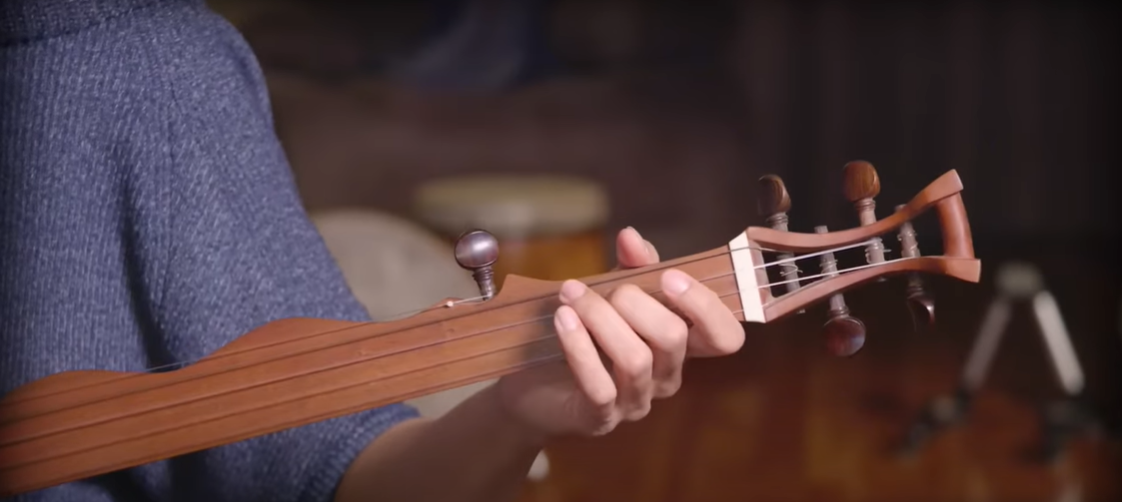
The Banjo and the Folk Music Revival
The mid-20th century witnessed a remarkable resurgence in folk music, with the banjo playing a central role in this revitalization. As the folk music revival gained momentum, spearheaded by influential artists like Pete Seeger and the Kingston Trio, the banjo experienced a renewed surge of interest and appreciation. Pete Seeger, in particular, emerged as a staunch advocate for the banjo, not only through his performances but also through his influential instruction book, “How to Play the 5-String Banjo.” This book played a crucial role in popularizing the instrument among a new generation of musicians who were eager to embrace the banjo’s unique sound and versatility.
Seeger’s approach to banjo playing was truly innovative and distinctive. He skillfully combined various picking techniques, introducing a fresh perspective that captivated audiences. Meanwhile, the Kingston Trio’s hit song “Tom Dooley,” featuring the banjo prominently, resonated through the radio waves and further propelled the banjo’s popularity. The infectious melody and the banjo’s rhythmic drive showcased its potential as a captivating and versatile instrument.
The folk music revival marked a significant chapter in the banjo’s history, reaffirming its cultural relevance and transformative power. It not only brought the banjo back into the public consciousness but also served as a catalyst for innovation and experimentation within the genre. The banjo’s unmistakable sound and its ability to evoke a range of emotions continue to captivate audiences to this day, ensuring its enduring place in the ever-evolving landscape of music and culture.[3]
The Banjo and Americana
The banjo’s journey from its African roots to the heart of Americana music is a captivating testament to its enduring appeal and remarkable versatility. This iconic instrument has become an indispensable fixture in the Americana genre, a rich blend of folk, country, blues, and rock’n’roll, which beautifully encapsulates the quintessential American musical experience.
With its vibrant and plucky sound, the banjo serves as the perfect companion to the storytelling nature of Americana. Its unique timbre adds depth, character, and an unmistakable charm to the narrative songwriting that defines the genre. Renowned artists like Abigail Washburn and Bela Fleck have fearlessly embraced the banjo in their work, pushing the boundaries of traditional banjo playing and introducing innovative interpretations and techniques that breathe new life into Americana music.
Through their pioneering efforts, these visionary musicians have inspired a new generation of artists, ensuring that the banjo’s legacy in Americana music remains vibrant and relevant. Its continued presence not only pays homage to the rich tapestry of American musical traditions but also serves as a testament to the banjo’s integral role in shaping the ever-evolving landscape of American music.
Today, as the banjo’s unique sound continues to punctuate Americana music, it effortlessly weaves a touch of nostalgia into contemporary trends. It remains a cherished symbol of heritage while embracing new horizons, reflecting the enduring spirit of American musical expression. The banjo’s unwavering presence in the Americana genre is a testament to its timeless appeal and its ability to captivate audiences across generations. It stands as a proud symbol of the enduring power of music to unite, inspire, and celebrate the diverse tapestry of American culture.[3]
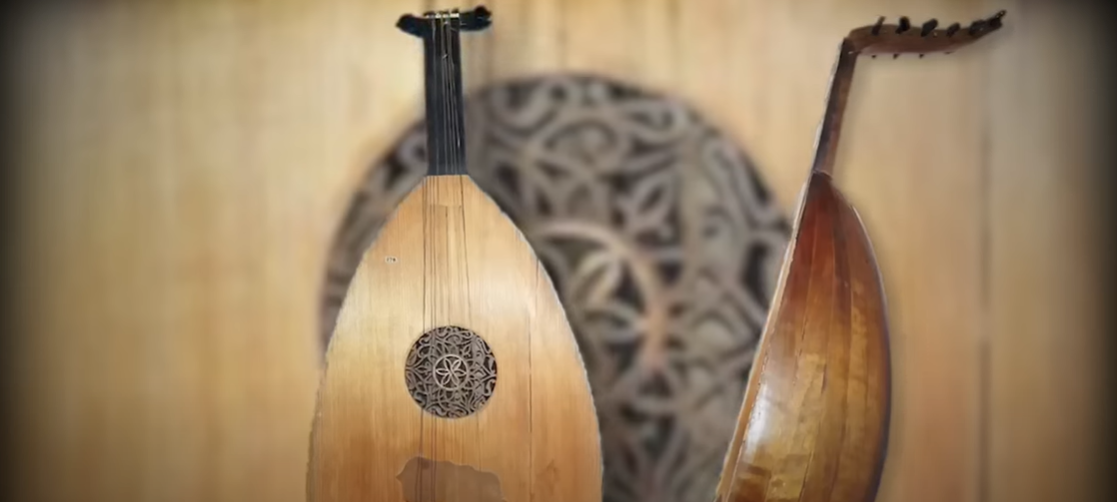
The Banjo Today
In the contemporary music landscape, the banjo maintains a prominent and fascinating position, transcending traditional genre boundaries and finding its place in a wide array of musical styles. Its distinctive sound and versatile nature have captivated artists across the spectrum, from country to pop, who have embraced the banjo and incorporated it into their soundscapes.
In the realm of country-pop crossovers, phenomenons like Mumford & Sons and Taylor Swift have skillfully utilized the banjo’s unique tone to infuse their chart-topping hits with a touch of rustic charm, creating a delightful fusion of genres. Meanwhile, indie artists such as Sufjan Stevens and The Avett Brothers have fearlessly embraced the banjo, seamlessly weaving it into their eclectic, genre-defying sounds, adding depth and texture to their musical creations.
However, the banjo’s influence and presence in modern music are not confined to the realm of western styles. Musicians from around the world, irrespective of their cultural backgrounds, have found a way to incorporate the banjo into their local music, further enriching the global appeal of this instrument. This global fusion of banjo-infused music showcases the instrument’s adaptability and its ability to resonate with diverse cultures and musical traditions.
Despite the evolution of music and the introduction of new instruments, the banjo’s unique sound and cultural significance ensure its continued relevance and popularity. It stands as a living testament to the rich tapestry of musical expression, forever adapting and resonating with the rhythm of the times. As we move forward, the banjo remains a cherished and celebrated instrument, weaving its captivating melodies into the fabric of our musical heritage.[3]
FAQ
Where did the banjo originally come from?
The origins of the banjo can be traced back to West Africa, where similar stringed instruments, such as the ‘akonting’ in Senegal and the ‘ngoni’ in Mali, were traditionally played. These instruments, often crafted with a skin-covered gourd and a long, fretless neck, are considered the precursors to the modern banjo.
The instrument’s journey to the Americas began with the tragic transatlantic slave trade. Enslaved Africans brought their music and culture with them, including their knowledge of these stringed instruments. Despite enduring unimaginable hardships, these resilient individuals managed to preserve their musical traditions and adapt them to their new surroundings.
Over time, they began to construct banjo-like instruments using available materials. The banjo evolved, incorporating elements from European and Indigenous American musical traditions, resulting in a unique blend of cultural influences. By the 19th century, the banjo, as we know it today, began to take shape in the United States.
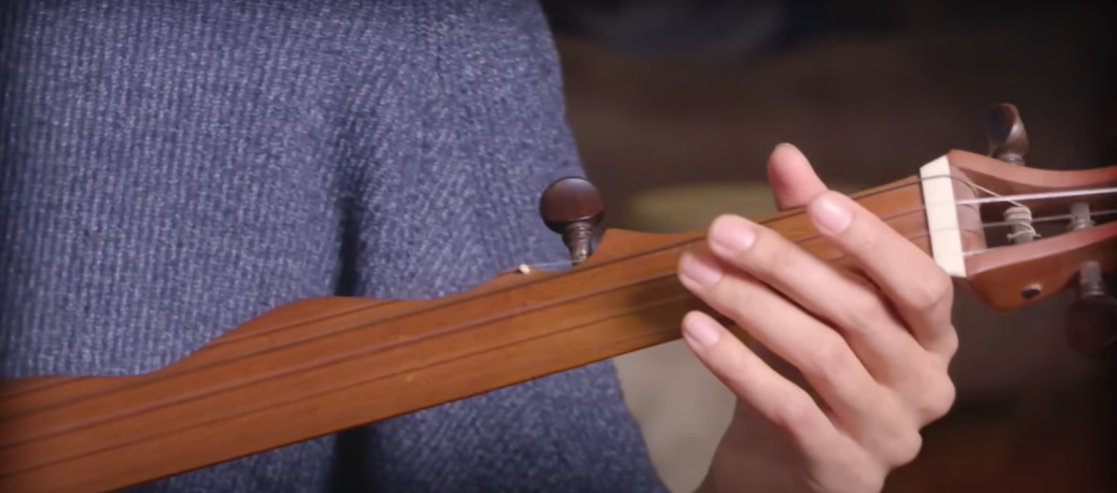
Initially, the banjo was primarily associated with African American musicians, who used it as a means of expression and a way to connect with their cultural heritage. However, as its popularity grew, it soon gained recognition and popularity amongst white performers as well. The banjo found its place in minstrel shows, where both African American and white musicians showcased their skills and entertained audiences.
Despite its complex and often painful history, the banjo’s African roots remain a vital part of its identity and heritage. It serves as a testament to the resilience and creativity of the African diaspora, reflecting the instrument’s enduring cultural significance. Today, the banjo continues to be enjoyed and appreciated by people from diverse backgrounds, highlighting the power of music to bridge cultural divides and unite people in the celebration of shared artistic expressions.
What is a fun fact about the banjo?
A fascinating fact about the banjo is that it is one of the few Western instruments that can be traced back to Africa. This connection can be seen in its unique playing style and rhythmic patterns, influenced by traditional African music. However, there’s more to the banjo’s story. In the midst of the American Civil War, the banjo became not only a source of comfort and entertainment but also a symbol of unity. Soldiers on both sides of the conflict would often gather around a campfire, strumming the banjo’s lively tunes to lighten the mood and provide a momentary escape from the harsh realities of war. The banjo’s soothing melodies acted as a reminder of the power of music to heal and bring people together, even in the darkest of times.
Furthermore, the banjo strings, in the instrument’s early years, were made of gut. These gut strings, crafted from the intestines of sheep, goats, or cattle, added a unique warmth and richness to the banjo’s sound. The craftsmanship required to create these strings was a testament to the dedication and skill of early banjo makers. However, as technology advanced, banjo strings evolved, reflecting the broader changes in musical preferences and materials. Today, banjo strings are typically crafted from steel or synthetic materials, providing a brighter and more vibrant tone.
The evolution of banjo strings not only highlights the banjo’s adaptation over the ages but also mirrors the broader changes in musical technology and preferences. It serves as a reminder of the dynamic nature of music and the constant quest for innovation and improvement. The banjo’s journey from Africa to the battlefields of the American Civil War to modern-day stages is a testament to its enduring legacy and its ability to captivate audiences with its unique sound and rich history.
Who invented the 5 string banjo?
The 5-string banjo, as we know it today, is a fascinating instrument that has evolved and been innovated over time. Rather than being attributed to a single inventor, its origins can be traced back to African instruments brought to the United States by enslaved people. These instruments, with their unique sounds and playing techniques, laid the foundation for the development of the banjo.
However, it was Joel Sweeney, an American musician and comedian, who played a significant role in shaping the modern design of the 5-string banjo. Sweeney, a popular minstrel performer in the 19th century, was one of the first white musicians to publicly showcase the banjo. While there is controversy surrounding Sweeney’s claim to have invented the 5-string banjo, there is no denying his influence in popularizing the instrument.
It is believed that Sweeney introduced the shorter fifth string to the banjo, creating the distinctive sound and versatility that we recognize today. This addition allowed for greater melodic possibilities and expanded the banjo’s range of expression. Sweeney’s performances captivated audiences and helped bring the banjo into the mainstream, paving the way for its incorporation into various musical genres.
The legacy of the 5-string banjo is a testament to the rich cultural exchange and musical innovation that has shaped American music. From its African roots to the contributions of musicians like Joel Sweeney, the banjo continues to be a beloved instrument that resonates with people across different cultures and generations.
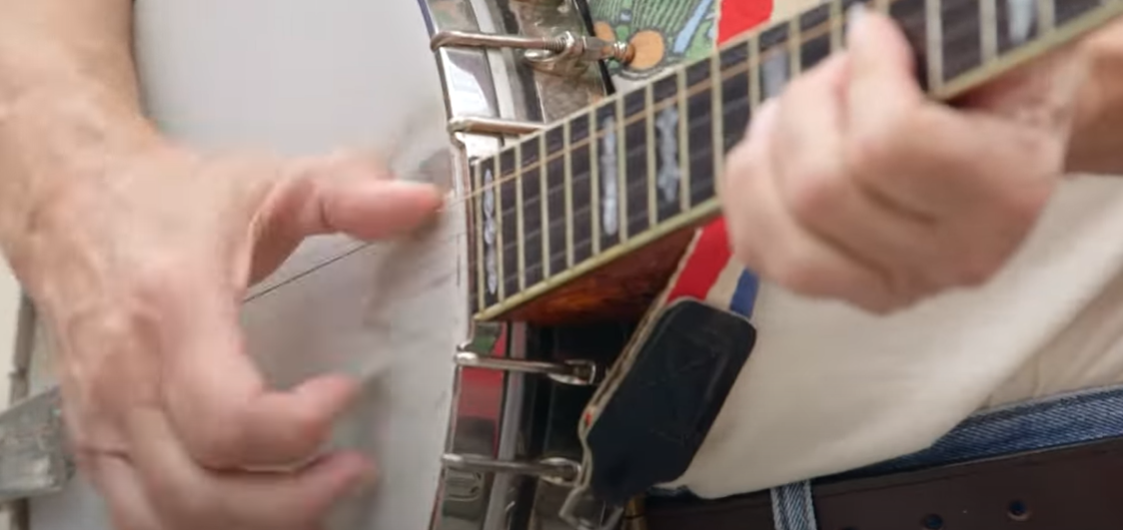
Is the banjo older than the guitar?
While the exact origins of both the banjo and the guitar are somewhat clouded in history, it’s generally agreed that the ancestors of the guitar predate those of the banjo. The guitar can trace its roots back to ancient civilizations, with stringed instruments resembling the guitar seen in carvings and statues recovered from the old Persian capital of Susa over 3,000 years ago. These early stringed instruments, known as “tanburs,” featured a long neck and a resonating body, similar to the modern guitar. They were played with the fingers or a pick, producing melodic sounds that captivated listeners.
On the other hand, the banjo has its earliest known origins in West Africa around the 13th century. The predecessors of the banjo were instruments called “akonting” or “ngoni,” which were made from a gourd or a hollowed-out wooden body with animal skin stretched over it. These early versions of the banjo had three to four strings and were played with the fingers or a plectrum, creating rhythmic and percussive tones.
However, it’s important to note that these timelines refer to the ancestors of the contemporary versions of these instruments, not the modern guitar or banjo as we know them today. The guitar and banjo as we recognize them both evolved in much more recent history, during the 19th century. The guitar underwent significant changes during this period, with the development of steel strings, which increased its volume and projection. The banjo, influenced by African and European musical traditions, transformed into a plucked or strummed instrument with a round body and a distinctive twangy sound.
Therefore, while the guitar’s precursors are older, both instruments have evolved significantly over the centuries to become the iconic musical instruments that we know and love today. Their rich histories and diverse cultural influences have contributed to their popularity and enduring appeal in various genres of music, from folk to rock, jazz to bluegrass.
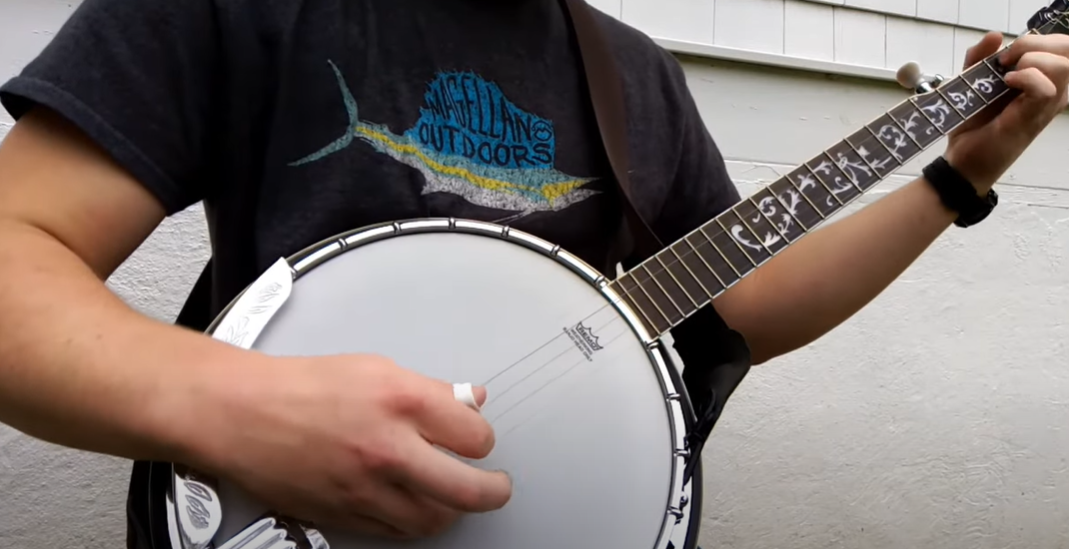
Who invented banjo?
The invention of the banjo, a truly remarkable instrument, cannot be attributed to a single individual, as its origins and evolution are intricate and fascinating. The earliest versions of the banjo trace back to West Africa, where talented craftsmen and musicians created similar stringed instruments such as the ‘akonting’ in Senegal and the ‘ngoni’ in Mali. These instruments were crafted with great skill and creativity by anonymous artists who passed down their knowledge through generations.
With the tragic transatlantic slave trade, these African stringed instruments found their way to the Americas. Despite the immense hardships faced by enslaved Africans, their ingenuity and love for music persisted. They ingeniously adapted and constructed these instruments using materials readily available to them, gradually molding and shaping what would eventually become the banjo.
The banjo, therefore, stands as a testament to the collective ingenuity of countless individuals across different cultures and continents. It represents the resilience of human spirit and the universal need for music. Across centuries, the banjo has evolved and transformed, preserving its rich cultural heritage while embracing new influences and styles.
In essence, the banjo is a testament to the enduring power of cultural expression and the profound impact it can have on society. Its complex journey, woven with history, craftsmanship, and the indomitable human spirit, serves as a constant reminder of the vibrant tapestry of human creativity and the beauty that emerges from cross-cultural exchange.
Useful Video: Uncovering the History of the Banjo with Rhiannon Giddens: From African Roots to American Music
Conclusion
The banjo, a captivating instrument with roots deeply intertwined within the rich tapestry of West African culture, has embarked on a remarkable journey through the annals of time and across vast continents. It carries with it the echoes of ancient melodies and rhythms, reflecting the diverse musical traditions of the societies that have warmly embraced its enchanting presence.
From its humble beginnings as precursors like the ‘akonting’ and ‘ngoni,’ the banjo has undergone a fascinating process of adaptation, resilience, and cultural fusion. Each evolutionary step has shaped its distinct identity, culminating in the modern five-string variant that we know today. This story of musical transformation serves as a testament to the enduring human spirit and the boundless power of artistic expression.
The banjo’s resounding and one-of-a-kind sound has traversed a wide spectrum of musical genres, leaving an indelible mark on the landscape of music. It has woven its way through traditional folk tunes, breathed life into the soul-stirring melodies of bluegrass, and even found its rhythmic pulse in the realms of contemporary pop. Its versatility knows no bounds, captivating the hearts of listeners across generations.
While the origins of the banjo bear the weight of a poignant reminder of the painful history of the slave trade, it is also a symbol of resilience and the indomitable human spirit. Its evolution is a testament to the power of cross-cultural exchange and the enduring universality of music as a language that transcends barriers. As we journey forward, the banjo continues to resonate with its timeless charm, adapting to new horizons while maintaining its irreplaceable place in the world of music.
References:
- https://issuu.com/musicians_union/docs/the_musician__autumn_2019__minus_ask_us_first/s/146536
- https://balladofamerica.org/banjo/
- https://www.blackmusicproject.com/exhibit/the-roots-of-the-banjo




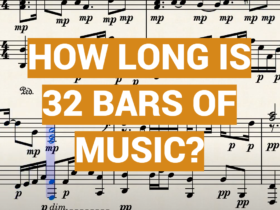
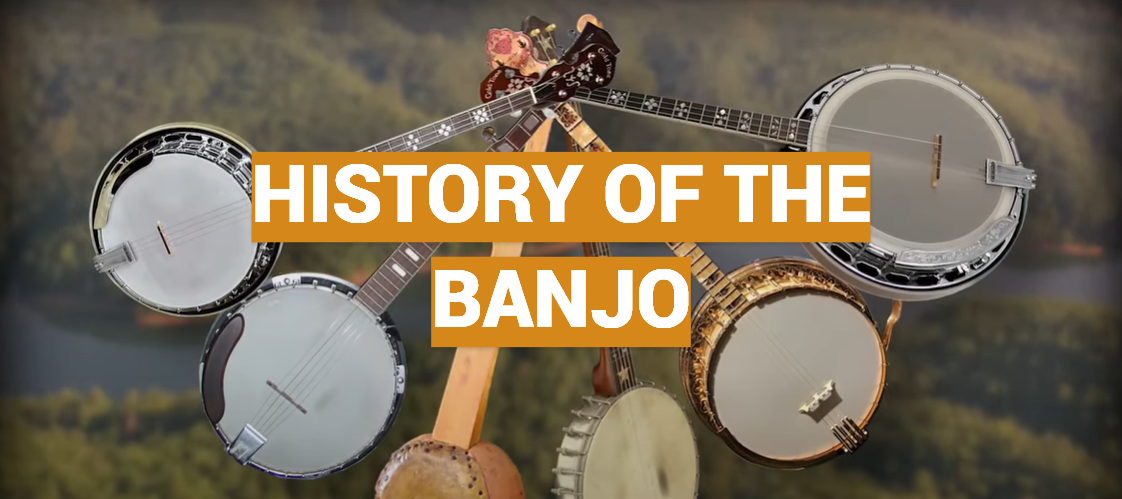




Leave a Reply